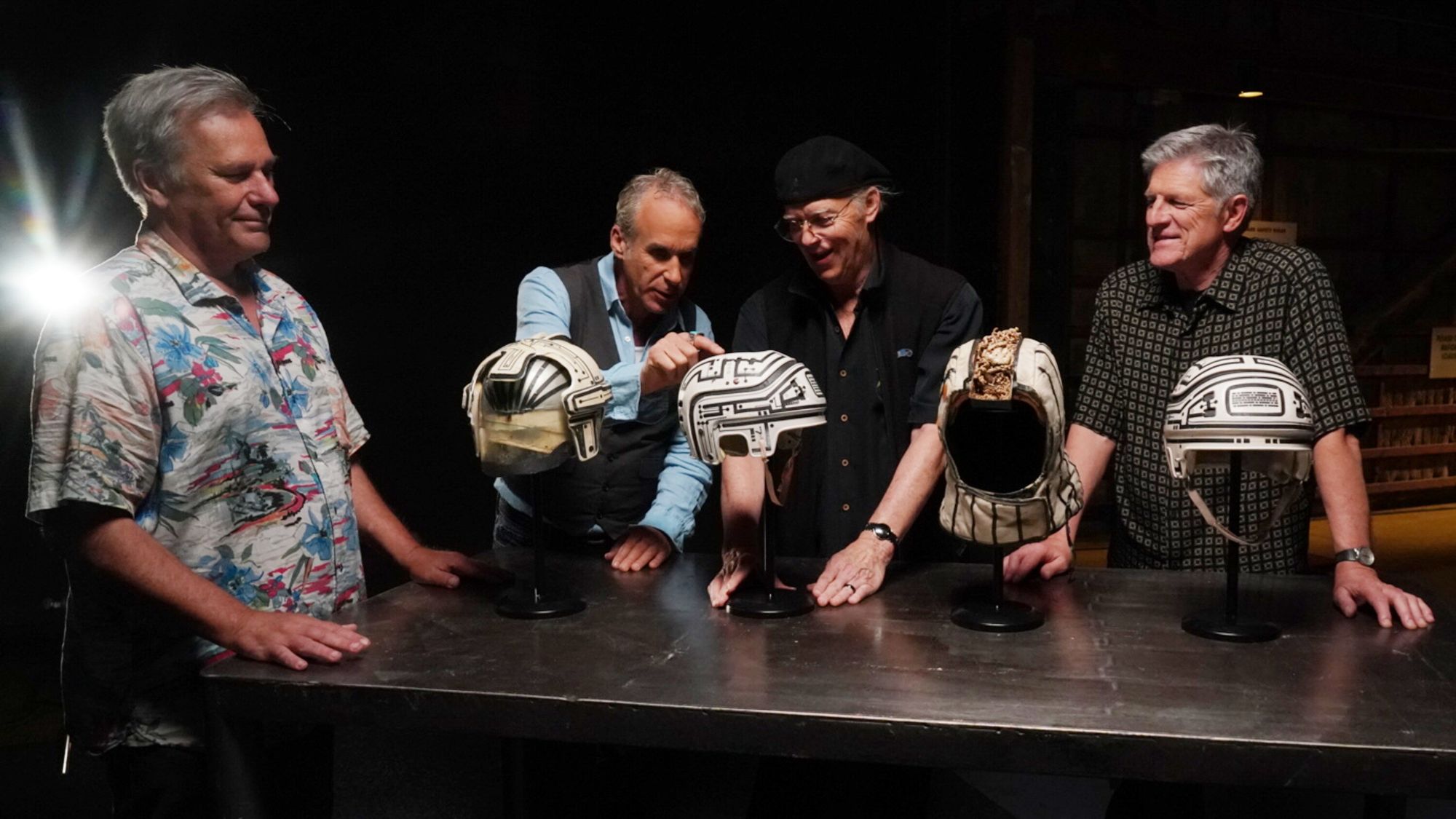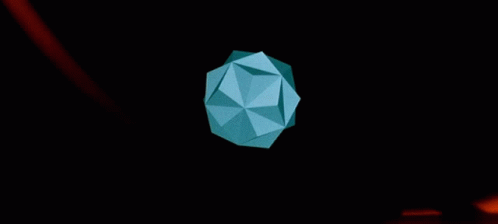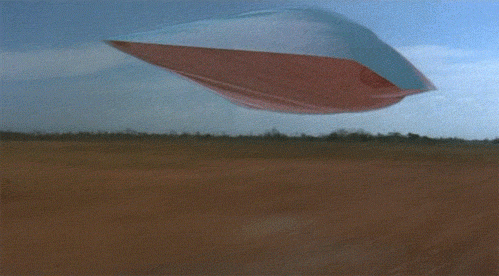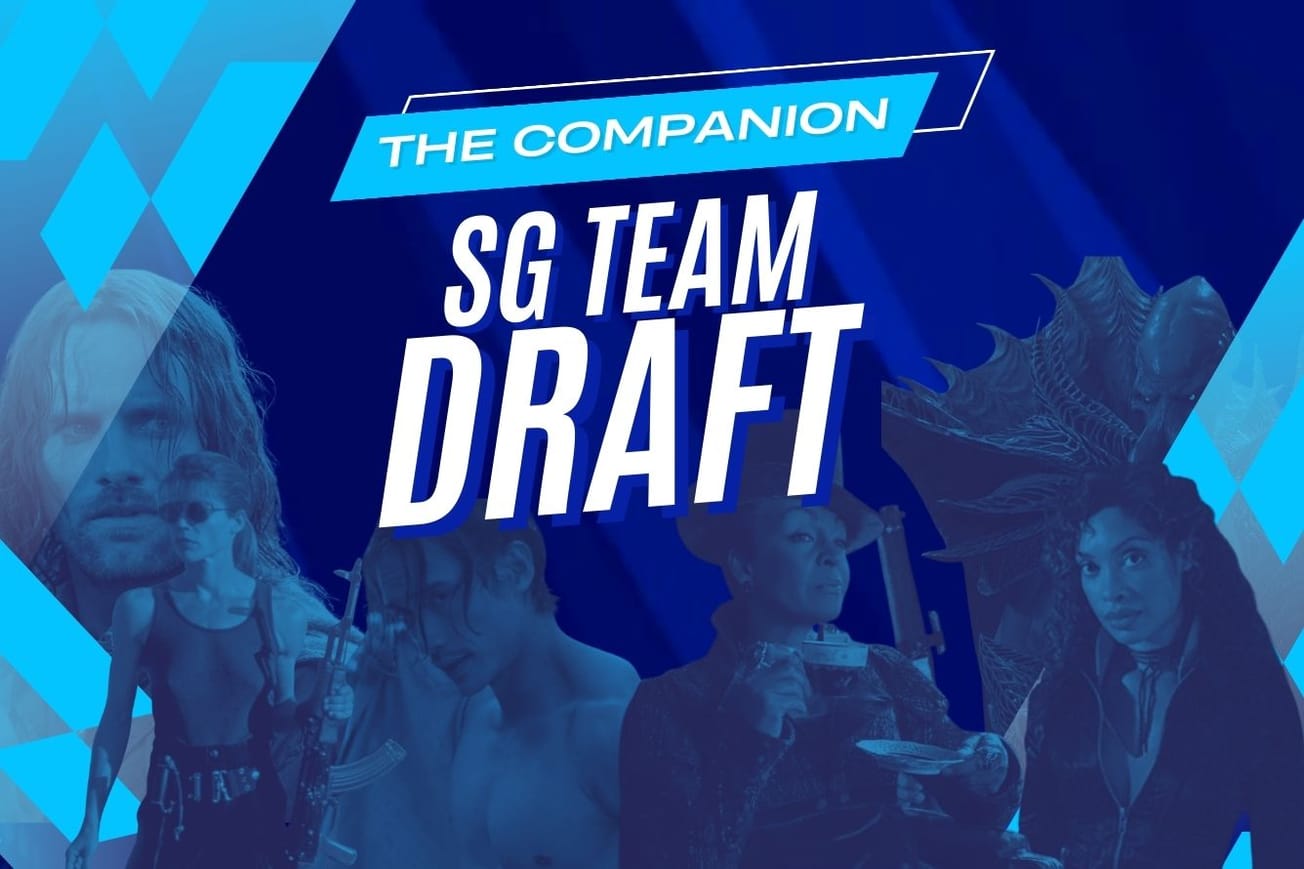If you’re a fan of Stargate SG-1 then you should know Jeff Kleiser’s name.
It’s not your fault if you don’t, he can’t be found in a single episode of the show, but along with CGI Fridays host Ed Kramer, and future podcast guest Frank Vitz, they created the visual language of 1994’s Stargate movie – the iconic kawoosh of the Stargate opening and morphing helmets of the Jackal Guards and Horus Guards – that is now indelibly linked to the series.
But how we got there has more twists and turns – and Tide – than you might expect from a résumé that groans under the weight of visual effects triumphs.
From Computer Science to CGI
“I started out my career very young age working with my brother Randal who went on to become a film director,” Kleiser tells Ed Kramer. “He directed Grease, The Blue Lagoon, and Flight of the Navigator. He was my older brother and he was making films in high school instead of writing papers and I thought this was a good idea. I was an actor in his early films, when I got to high school I started making super-8 movies and it kicked off a real interest in cinema and watching movies. [I] watched all the movies I possibly could get a hold of. Randall went on to USC, the film department – he was a roommate of George Lucas’s and got his career started as a film director.”
Like many early CGI innovators, there was no direct route into an industry that barely existed. Instead, they had to feel out their own opportunities and create their own links between the very distinct worlds of computing and filmmaking. Despite having a clear calling in the latter, took a surprising left turn into the former, and whilst Randal Kleiser played beer-pong with George Lucas (we hope), Jeff Kleiser went to study math at Colgate University in Hamilton, New York. Rather than taking him away from Hollywood, it turned out to be the scenic route.

“If you were a math major, you had to take a computer course and there was one in computer-generated music. I was a drummer in high school I had a band, so the idea of a computer creating these different types of sounds and noises really struck me as a fascinating conglomeration of mathematics and art.”
Taking advantage of a winter studies program to work at IBM, Jeff Kleiser quickly reached the limit of his passion for computing but discovered a passion for computer imaging courtesy of his neighbor, Judson Rosebush, a professor at Syracuse University, who was an early evangelist for computer animation.
“Judson and I became friends, I went back to Colgate and I went to the Fine Arts department, I said, ‘We could be making images with computers!’ They had no idea what I was talking about and they told me to go away. I went to the Computer Science department and said, you know, ‘We could use these computers to make images,’ and they said, ‘We’re doing statistics here,’ you know, going back and forth [until] they said, ‘Well, what do you want?’ And I said, ‘Well, I want a computer graphics major, somewhere between Fine Arts and Computer Science, and I have a professor at Syracuse, who will sponsor me and give me the software and look over my shoulder.’ So they said, ‘Alright, just go away and do that.’”
Graduating in 1976, Jeff Kelsier went to work for Dolphin Productions, a short-lived computer animation studio that created logos for TV using “this horrible machine for making horrible looking graphics.” After a year at Dolphin, Kleiser talked Judson Rosebush into relocating his dream of a new company from Syracuse to New York City. Digital Effects Inc. launched in 1978 with a “ridiculous pipeline” that “involved using a computer in Maryland and shipping data to California to put the data on a film recorder – black and white high contrast film – and that was sent back to New York and I would pick this black and white matte passes basically and on an optical printer, do a whole bunch of processes with color filters and shoot it on the color film – multiple passes to make color images and it was very, very slow and clumsy.”
Early CGI on Tron and Flight of the Navigator
Digital Effects soon picked up its first motion picture contract for what would be a landmark in the nascent field of CGI: Tron (1982). Jeff Kleiser and his colleagues worked on “the opening title sequence where pieces of Tron come together and occlude this bright white light source and form the Tron character in the opening titles, and also all the Bit character that flies around [saying] yes and no, it was the only comic relief in the movie, and they probably should have had more comic relief.”

Bit – a contender for cinema’s first fully computer-generated character – appears in only two scenes, but was described by Annabel Jankel, Robert Leach, and Rocky Morton in Creative Computer Graphics (1984) as “one of the most memorable characters in the film.” As is often the case, the real innovation is under the bonnet.
“Eliminating the optical printing step was a huge step for us,” agrees Kleiser. “I mean, we still had to use optical printers to put our imagery over backgrounds because there was no digital compositing at the time. But at least we didn’t have to use optical printers just to make a color image. We could shoot a color image out onto a 35 negative and process it and get it done.”
Digital Effects closed a few years later and Jeff Kleiser joined his brother, Randall, on Disney’s Flight of the Navigator (1986), bringing with him Bob Hoffman. (“Brilliant programmer,” Kleiser notes wryly, “he converted marijuana into software.”) Digital Effects had been involved in test shots for the movie, but internal acrimony (“The company was spiraling down the toilet,” Kleiser sums up) made Disney leery of giving them the contract. Jeff Kleiser and Bob Hoffman – who were now working for Omnibus Computer Graphics – represented the know-how with none of the drama.
“When Randal came to visit, he was struck by two things that we had put into commercials. One was a Tide detergent commercial, where we took a bottle of Tide that we had digitized and it rotates around and changes into a map of the United States. He said, ‘Wow, that’s cool. I’ve never seen anything like that before.’ He said, ‘Can we have our spaceship change shape?’ And I said, ‘Sure, no problem give us the two shapes, the ship will interpolate between hover mode into a streamlined aerodynamic mode.’ So that was the first thing that made Randall think that computer animation was the way to approach representing the ship.

“The other one was, Jean Miller and Bob Hoffman had written a reflection mapping software that simulated a drop of water dripping from a faucet, which had refraction and reflection on the spout and it drips off. Randal saw that: ‘Wow. Could you make the spaceship reflective, like reflecting the environment?’ – ‘Well, yeah, sure. We just shoot the environment and map it onto the spaceship and look like it’s there.”
Luxor Las Vegas and the late Douglas Trumbull
Now heading his own company – Kleiser-Walczak, which he co-founded with Diana Walczak – Jeff Kleiser’s contribution to the Stargate universe came in another characteristically unlikely form: the newly-built Luxor Las Vegas hotel.
Douglas Trumbull, the late great visual effects pioneer behind 2001: A Space Odyssey (1968), Close Encounters of the Third Kind (1977), Star Trek: The Motion Picture (1979), and Blade Runner (1982), had fallen out of love with Hollywood and retreated to deepest Massachusetts where he was tinkering with immersive entertainment. In 1992 – on the eve of the Los Angeles riots – Trumball was tasked with a series of three ‘rides’ for Luxor Las Vegas and went looking for a CGI studio to partner with.
“Doug is sitting facing me,” Kleiser recalls, “LA’s behind him, and he said, ‘Well, I want to do this project. But I really want to do it in Massachusetts, where I’m headquartered.’ And I said, ‘Well, we will pick up our company and we’ll hire a bunch of people, ad we’ll move to Massachusetts to set up with you so that your motion control and our computer-generated elements can be integrated in the same building,” because the internet was not in a position where you can send stuff back and forth at all. We were the only company that was willing to actually move there and move in with him., so he hired us.
“And by the way, Doug sitting here, there’s smoke coming up from Los Angeles in the background. And I said, ‘Yeah, let’s go. Let’s go now before they close the airport.’”
As befitting a venue inspired by Ancient Egypt, the three ‘rides’ – which saw audiences jolted around on a motion control platform in time with IMAX footage – told the story of a high-tech pre-Egyptian civilization. “We wanted to create some place for you to go,” Trumbull commented in the 1993 documentary, The Making of Luxor Las Vegas. “Some place for you to have an adventure, someplace you haven’t seen before. Designing the architecture and motif of this pre-Egyptian civilization, our idea was that everything you’ve ever seen in Egypt is a poor facsimile of everything this high technology civilization developed.”
“There was the curved screen [attraction], In Search of the Obelisk, which was all the Egyptian stuff flying through the pyramid. I remember one time we went to go see the motion base [in a] separate building, the guys were just screwing around. They said, ‘Well, I wonder what would happen if we put a square wave into the horizontal,’ and the whole thing went bam, bam, bam.
“If somebody had been on the chair, the centrifugal forces would have just ripped their head off. It was like two-inch hydraulic cables driving this thing.”
Stargate’s First Kawoosh and the Jackal Guard Helmets
With Luxor Las Vegas on the showreel, Kleiser-Walczak pitched for Stargate (1994). They impressed the studio not just with their record, but with their commitment to agile teams working alongside the production offices. Despite director Roland Emmerich’s then-resistance to CGI – a position that now seems rather quaint given his oeuvre –, Kleiser-Walczak ended up contributing somewhere in the region of 350-380 digital effects shots, from dotting the Arizona desert with pyramids to the jaw-dropping spectacle of the Stargate itself that even the CGI critics at Corridor Crew admit is still “pretty sweet.”
As with John Gajdecki’s attempt to recreate the effect for Stargate SG-1 a few years later, the kawoosh (or kethudge as they called it) of the gate opening was achieved by firing an air cannon into a tank of water. The disastrous first result is clearly a rite of passage.
“We didn’t know how much air pressure to set the cannon on but it went from one to 500lbs, so we said ‘Let’s try 100 – start the camera rolling and hit the thing.’ It evacuated all the water out of the tank and onto the camera and everybody. It turned out that 1lb was about the right amount.”
The passage through the gate, made by James Spader’s floppy-haired archaeologist Daniel Jackson, was easier to execute but no less awe-inspiring to the viewer:
The sequence that caused Kleiser the most anxiety – and one that Ed Kramer helped solve – was the sinister morphing helmets of the Jackal Guards and Horus Guards which retract like blades of a fan into the wearer’s collar.
“You shoot the character without the headdress, you shoot the character with a headdress. And then you have to go in and, and create all these little sections that you would then wipe off to reveal – and it had to match up, the two things had to match up. I think the cameras were moving as well.”
“I remember at the beginning,” adds Ed, “we were talking about ‘Are we ready yet to actually create these in 3D geometry and track them perfectly to movements of the character and then be able to use them with their 3D animation?’ And I just didn’t think we were quite at that point.”
This is just part of Jeff Kleiser’s incredible conversation with Ed Kramer, so if you want to hear a pair of CGI wizards explore the history of CG characters – and learn what the heck a “synthespian” is – as well as discover how iconic sequences in Stargate (1994), Judge Dredd (1995), and X-Men (2000) came to be, you can listen to Ed Kramer’s CGI Fridays episode 2 above, or through your podcast platform of choice.
This article was first published on June 17th, 2022, on the original Companion website.
The cost of your membership has allowed us to mentor new writers and allowed us to reflect the diversity of voices within fandom. None of this is possible without you. Thank you. 🙂










